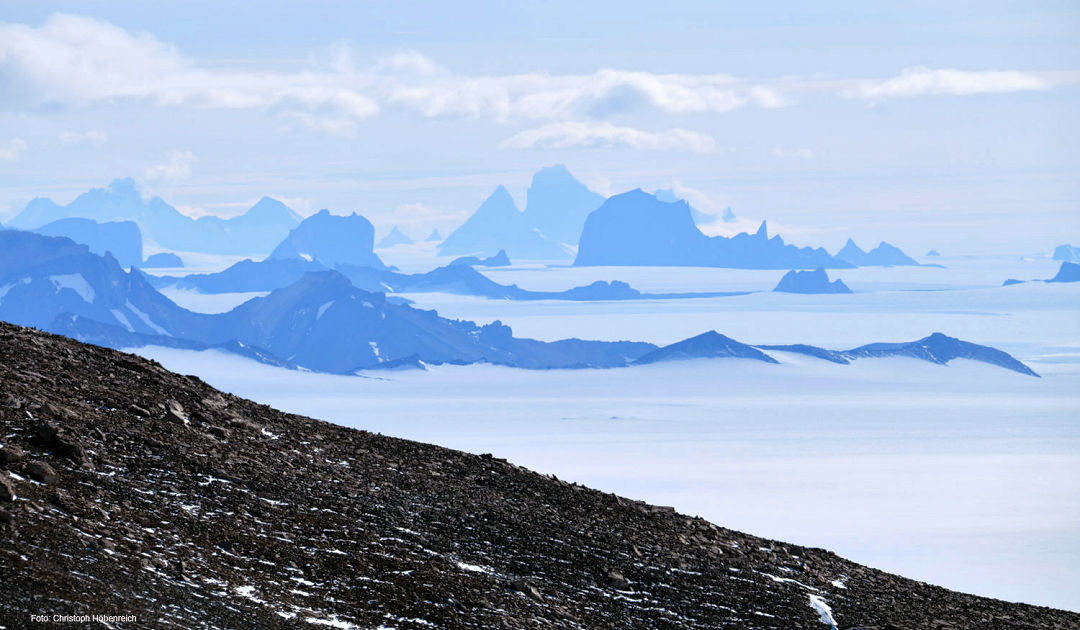
There are still many corners of the earth that have never or hardly been visited by anyone. One such region is located in East Antarctica and bears the unusual name of New Swabia.
New Swabia, a very remote, mountaineous region in East Antarctica is off the radar of most people and adventurers and seems out of this world. “This is as close as you can get to exploring another planet,” says Dr. Christoph Höbenreich, an internationally renowned mountain and polar guide, adventurer and partner of Ultima Antarctic Expeditions. In January 2023, he led a two-man expedition to this rarely visited mountain region supported by Ultima Antarctic Expeditions, formerly known as The Antarctic Company TAC . He describes the mountains of New Swabia as “the most exciting and bizarre mountain landscape on this planet.” The expert, considered a polar veteran with 15 completed Antarctic missions, was available to Polarjournal for an interview about this extraordinary expedition.

Question: Can you describe the experience of being completely on your own in the icy wilderness?
Christoph Höbenreich: It is a very special feeling to be dropped off in one of the most remote and inaccessible regions of our planet. For some, it can seem depressing. For others, like myself, it’s liberating. Far away from all influences and the burdens of civilization, the senses are awakened, sharpened, intensified. You simply become aware of how vulnerable you are. It is a highly rewarding experience to travel and be on the road in a world that offers you nothing more than the air to breathe.
What was the main purpose of the expedition?
The goal of my fifth expedition to New Swabia with Ultima Antarctic Expeditions was to explore the mountains and glaciers of the western Wohlthat Mountains using my own power on skis and on foot during three weeks. A new route through the Humboldt and Petermann Mountains was to be scouted and some mountains were to be climbed for the first time.
Had you visited the area before?
So far, only two mountaineering and skiing expeditions have been to this region. I previously flew over the Wohlthat Mountains on my way to the famous Drygalski Mountain – and in 2017, with the support of Ultima Antarctic Expeditions, I conducted my first reconaissance expedition.

What interested you most about this area?
I am driven by curiosity to explore new or rarely visited Antarctic mountains that are far off the beaten tracks that most mountaineers in Antarctica usually follow, like on Mount Vinson in West Antarctica. New Swabia is a true explorer’s land. I am also very interested in the polar exploration history. The mountains of New Swabia were discovered by an outstanding but, due to contemporary historical circumstances, almost forgotten historical expedition, namely the German Antarctic Expedition 1938/39, which discovered, photographed and named the mountains from the air with Dornier-Waal flying boats catapulted from their expedition ship.
What makes this area different from other parts of Antarctica?
The Wohlthat Mountains, a mountainous region in New Swabia, is part of Dronning Maud Land and has been visited for many years by various nations mainly for scientific purposes. However, it is still little explored among mountain and ski adventurers. New Swabia is a dreamland. For me, the mountains of New Swabia are the most exciting and bizarre mountain landscape on this planet. Here, stunning rock towers protrude from the inland ice, rising sometimes hundreds of meters vertically into the sky. These mountains are absolutely unique even in Antarctica.
What were some of the statistics from your trip – days, distance, ascent, temperatures, etc?
We were on skis for three weeks. Our route was a 100 kilometer loop and in addition we climbed another 50 kilometers or so up the mountains. We first climbed five peaks on higher mountains as well as smaller nunataks (mountain peaks jutting out of the ice). Temperatures at the end of the Antarctic summer ranged from a relatively pleasant -15°C to a bone-chilling -25°C.
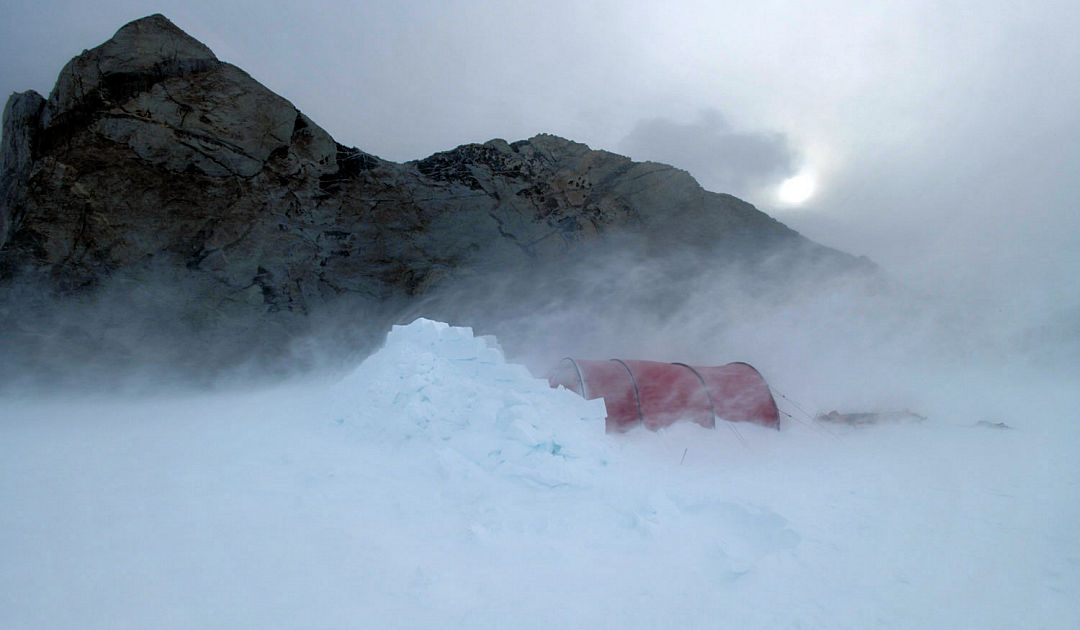
Can you describe your planning, to be self-sustained for the trip?
An expedition to the interior of Antarctica is always a great challenge. Even more so when you leave the familiar routes with only a two-person team. It takes a lot of experience and perfect equipment. Since this was my 15th Antarctic expedition as a UIAGM (International Association of Mountain Guides, ed.) and IPGA (International Polar Guiding Association, ed.) expedition polar guide, I knew what to expect and how to prepare myself and my expedition member. We took the best polar tent (a Hilleberg) and all the equipment we needed for survival, skiing and mountaineering in a light-weight expedition. And the most important thing: we had to rely on ourselves, because you can’t always count on help everywhere. In East Antarctica, and especially in its mountains, you are really remote.
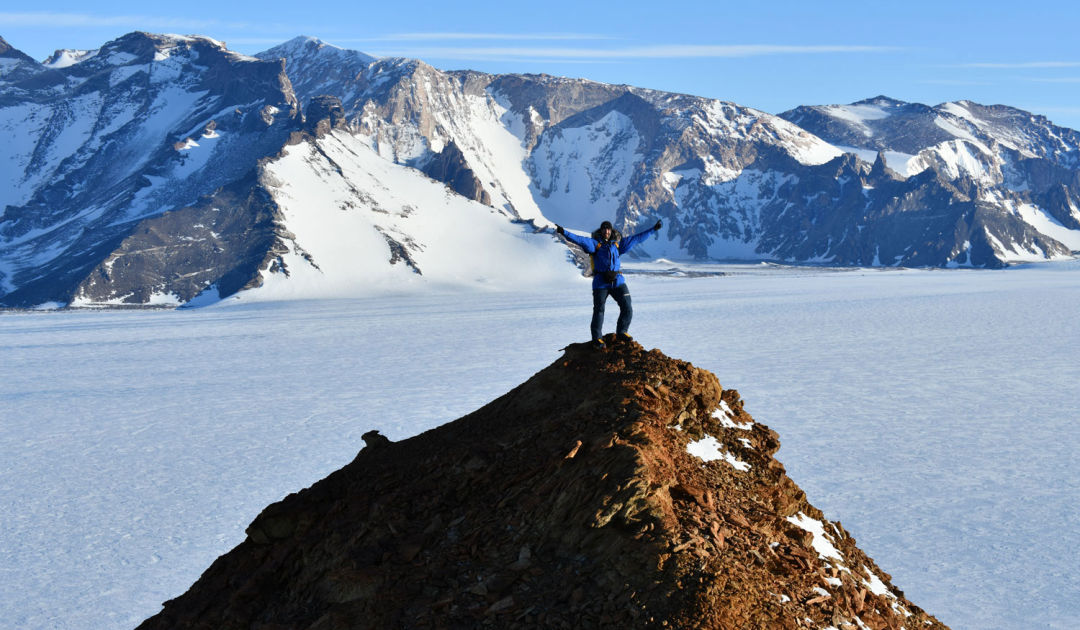
What were your highlights?
Actually, almost every day offered a highlight and surprises. But if I had to choose my personally most outstanding highlight: the first ascent of two peaks of a high mountain massif in the central Humboldt Mountains, which I named “Nanukspitze” and “Denalispitze”, via a steep couloir (a long ice gully, editor’s note). I was completely on my own, as my partner had decided to turn back at the entrance to the 1,000 meter high steep couloir. The view over the entire mountain range and far onto the South polar plateau for more than 100 kilometers was simply incredible. I think this is as close as you can get to the feeling of exploring another planet.
What were your challenges?
There are numerous dangers to be wary of: Hidden crevasses, frostbite, snow blindness, destructive katabatic winds or fire in the tent. But if you are well prepared, experienced and careful, you can overcome all the challenges that the icy world throws at you. Of course, social interactions with the expedition partner or customer can also be a challenge. But with Ruppert I was lucky and we had a lot of fun together anda good laugh. The biggest challenge, however, was probably always making the right decision about which of the numerous beautiful, nameless mountains we wanted to climb – there are just so many there.


Was your expedition safe? Do you have some details about safety?
An Antarctic expedition is never “safe”. If you want safety, you have to stay at home in bed. But with experience and perfect equipment, you can reduce the dangers and risks to a very low level and an easily acceptable minimum. But life in the mountains is never “safe” – especially when you venture into the unknown. Only those who leave their comfort zone can push their limits and gain new, intense experiences. And this is where the magic happens!
What fascinates you most about Antarctica in terms of science?
I was fascinated to see what has and has not changed in the mountains of Antarctica over the last few decades. A visible sign of recent climate change and the rise in global temperatures in recent decades is the sometimes dramatic decline in snow and ice cover in parts of the polar regions, especially in the Arctic. It seems likely the only exceptions are the high-polar, arid zones of the Antarctic continent – and specifically of the inner plateau of East Antarctica. However, recent local indications point to a decrease in glaciation and snow cover along the East Antarctic coastal zone. But I was concerned with whether the transition zone between the low coastal regions and the high polar plateau affected as well?
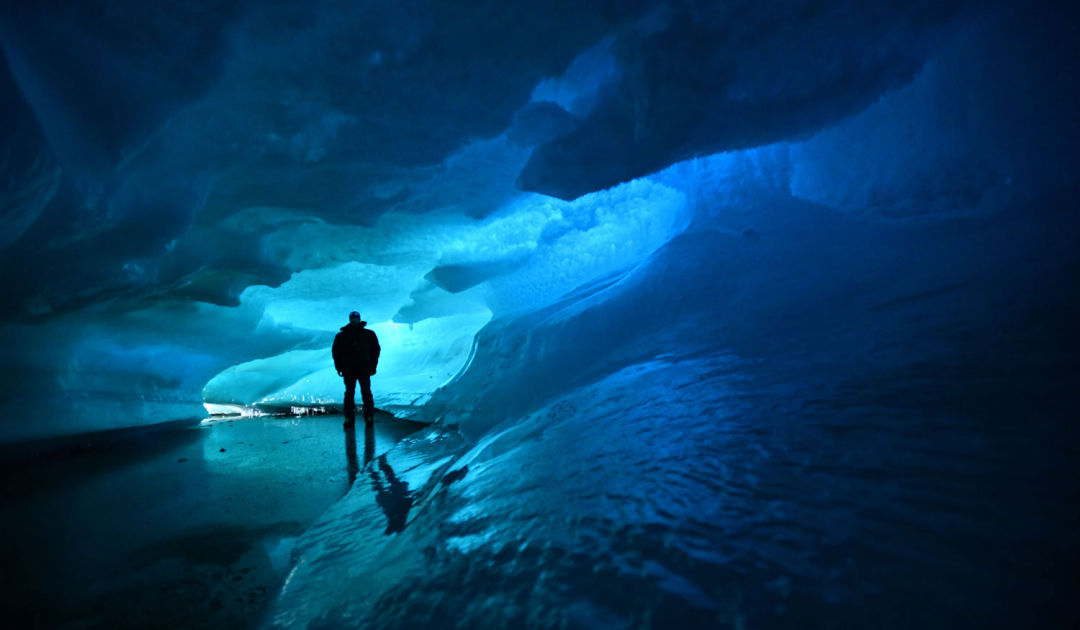
Mountain ranges encountered within this incline area of the polar plateau, like the mountain ranges of New Swabia, provide a good opportunity to examine this question by comparing them with aerial photographs taken by the German Antarctic Expedition in 1938/39 – more than eight decades later – especially by comparing differences in snow and ice cover. But these are highly dependent on seasonal and/or weather-related influences.
In looking for differences in the degree of glaciation and snow cover during the past seven decades, however, I was delighted to find NO discernible evidence of change This conclusion applies to the outlet glaciers as well as to the alpine glaciers and the extension of the snowfields at elevations between 1500 and 2500 meters above sea level.
Due to the prevailing high-polar, arid climate, an increase in snowfall can be expected due to climate-related temperature increases, which is supported by single indications in the southern part of the mountains. Therefore, we do not yet have to fear that the mountains and alpine glaciers of New Swabia will lose their magic and beauty as quickly as glaciers do in many other parts of the world.
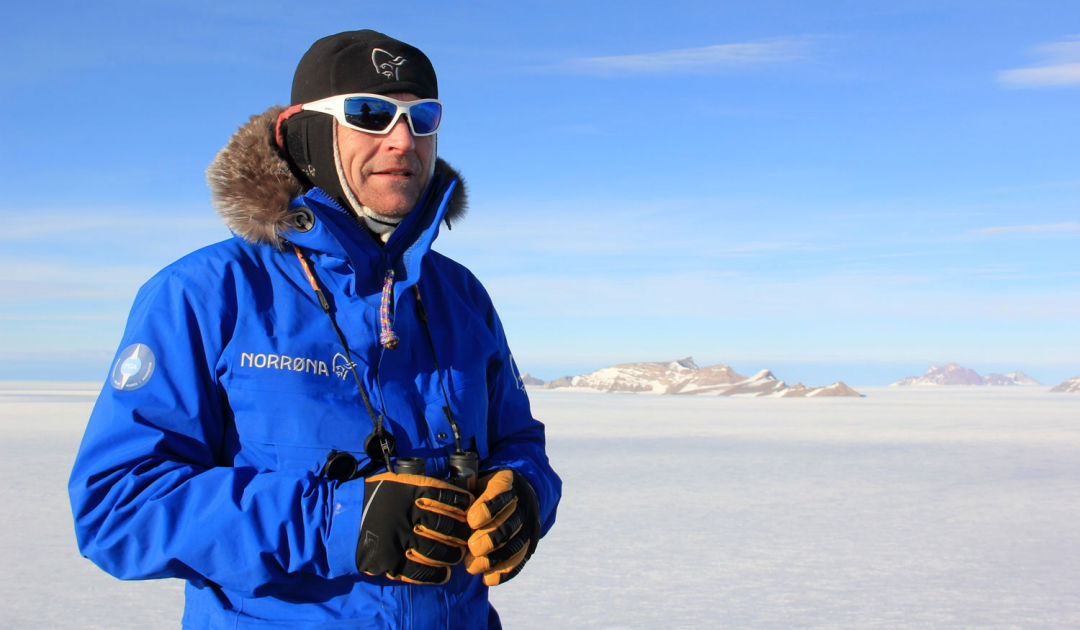
What future expeditions are you planning?
I have been bitten by the polar bug on my first expedition 30 years ago and continue to dream of using all my experience and knowledge to explore new, unknown mountains. I still have plenty of dreams and ideas, and am excited to realize them with interested polar travellers, who share the same spirit and enthusiasm for remote and unknown places. Together, we never stop exploring and living the Antarctic dream!
The interview was conducted by Murray Williams in a collaboration with PolarJournal; translation: Dr. Michael Wenger, PolarJournal.

Dr. Christoph Höbenreich, the experienced explorer, UIAGM-certified mountain guide and IPGA polar guide is planning further adventure expeditions in Antarctica together with Ultima Antarctic Expeditions. Explorers interested in learning more can either contact Dr. Christoph Höbenreich via email at connect(a)ultima-antarcticexpeditions.com or directly at christop.hoebenreich(a)aon.at.
More on the topic






This was a wonderful read. New Swabia region is just stunning and need to remain human activity free to stay as pristine as it is